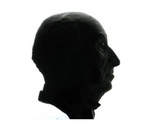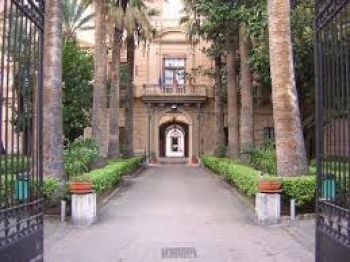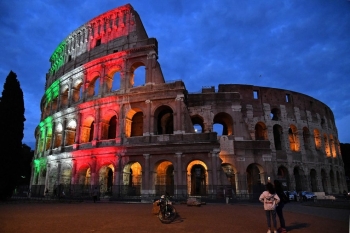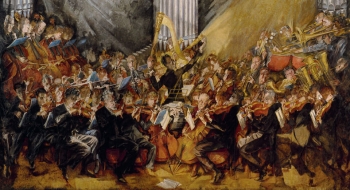Introduction to the technique of orchestral conducting according to the system of Ilya Musin
From Arturo Toscanini to Daniel Harding, the figure of the orchestral conductor has always been wrapped in an aura of mysterious charm.
The art ofholding the baton is often an incomprehensible enigma for the simple enthusiast and represents a formidable and exciting challenge for the musician who engages in it.All the secrets of the podium are revealed in the book published by Edizioni Curci: Introduction to the technique of conducting according to the system of Ilya Musin.
The author is Ennio Nicotra: pupil and assistant of Musin, the legendary Russian musician who had among his students were Yuri Temirkanov, Valery Gergiev, Rudolf Barhsai, Semyon Bychcov, Teodor Kurrentzis. Nicotra makes use of his teaching in a volume that stands out for its clarity and practicality.
These pages allow you to acquire a solid basis thanks to a path that starts with the first rudiments: setting up the arm, preparing the "staccato" and the "legato", attacks, slow tempi, rhythmic figures, pauses, phrasing, use of the left hand and of the baton.
The support of the DVD is fundamental, where the musical examples are shown with the contribution of the famous piano duo of Bruno Canino and Antonio Ballista.
After the success of the first edition, the text was re-launched in a new version with text also in German (as well as in Italian, English and Spanish)
What is the gift that a conductor must have, in addition to listening, to an instrument that is different every time like the orchestra?
“Orchestras are living instruments, different from each other. Each orchestra is a microcosm that reflects the social fabric and the characteristics of the context in which it is constituted and operates. There may be highly professional but icy disciplined orchestras in their relationship with the conductor, and conversely, undisciplined but very warm and humane orchestras and this transpires during the concert. There are orchestras that need to be dominated by a director-dictator and others who could never tolerate it. Among the many qualities that the conductor must possess, not least is diplomacy and the ability to find compromise. He must know how to 'smell the air' from the first approach with the orchestra. He must also master a clear technique that facilitates his relationship with the different orchestras he will be working with. Sometimes, a conductor who is accustomed to always working with the same orchestra develops a personal sign language that does not work when he is in front of a different orchestra. As proof, I think of the case of Mravinsky, who for 50 years conducted only the Leningrad Philharmonic and refused to conduct others. He had developed a total symbiosis with his own instrument and knew that with another formation this fusion could never have materialised.
In this work you face different historical eras. How has the technique of orchestra conducting changed in parallel with the repertoire over time?
“The development of the conducting technique has followed a path that has been detached from the repertoire. For certain, we cannot assume a parallel development. Let us not forget that until a few decades ago, we continued to profess the non-existence of a conducting technique, and that this made it the only art without fixed rules. Everything was explained by the charismatic figure of the conductor. The charisma operated the miracle of making musicians a single instrument, subjected to the will of an individual. The theorisation of conducting technique concentrated on the activity of a few enlightened teachers such as Hans Swarowsky in Vienna and Ilya Musin in St. Petersburg, although on different paths. The latter's work was practically unknown in the rest of the world due to the "iron curtain" that characterized the Soviet Union's closure policy for over 60 years."
You were a pupil and assistant to Ilya Musin. What does his method consist of?
"Ilya Musin has developed a system that allows the conductor, through the study, the assimilation and application of technical principles that Musin himself observed and codified, to express himself and communicate his own interpretation.
Very briefly, the Musin method is a tool that gives conductors the possibility of being able to express and make their interpretative thinking visible. It has often been compared to the Stanislavsky System for the study and development of the acting technique, that is, the work that the young actor must do on himself. And if in the end we look carefully at the great conductors, we immediately see the presence in many of them of a strong actor component "
How did the lessons take place in Musin's class?
In the Kybalion there is a sentence that reads: "When the sound of the Master's footsteps is heard, the ears of those who are ready to receive the teaching are opened." This is exactly the state of mind that enveloped us as soon as we perceived the presence of Musin in the corridor, the lessons were a joy, a party, we returned home with a grateful spirit for the tuition received. During the week we worked in class with the piano duo and on Saturday morning with the orchestra.
Over time I realised that in reality it is much more difficult to make two pianists play better and exactly together than a whole orchestra, because when the orchestra feels the inability or inexperience of the conductor, it prefers to ignore it and goes on alone. For this reason, to study the technique must begin with two pianists and then it passes to the orchestra, and it is exactly for these reasons that certain teachers who ignore it wisely prefer to avoid this type of laboratory. The pianists always have their eyes on you and they forgive nothing. The relationship with the orchestra is often distorted by the players themselves.
How much can a conductor's personal vision of a musical work affect interpretation, through his reading of a score?
"This is the most important aspect of the orchestra conducting, the study and interpretation of the piece. Many schools try to standardise the interpretation of the score. We often come across doctrines that align with the vision of the leader and try to perpetuate it in the followers. This is wrong in my opinion, it is the death of the evolution of the interpretation. Each interpretation must be authentic and individual, I leave my students complete freedom of interpretation but I try to guide them in finding the simplest and most effective way to convey their vision of the piece to the musicians "
Do you believe that Italian music conservatories offer good courses in conducting studies?
“Yes, for all that concerns the basic preparation of the student. The technical and communicative aspect is not explored as it should be done. To be explicit: I had graduate students, I repeat, graduates, who had never had explained to them, the difference between staccato and legato schemes, or how to show an attack. Some time ago one of them gave a lecture at the Sorbonne on the Musin Method .... Seeing the students coming to my courses from the United States, the situation is probably the same as in Italy, with the aggravating circumstance that there students pay disproportionate fees... But with this I do not want to accuse anyone, or raise controversy, it is a subject unknown in our institutions, and in general in the West, in my opinion it should officially be part of the curriculum"
What opportunities are opened up for the students then?
"Following private courses, if they like, there are several. In these places they sometimes try to get hold of the layman for two-year or three-year courses. But the picture does not differ much "
Conversely, how long do your courses last?
"I do not chain students to two-year or three-year courses, which in any case would be false, since the only ones recognised are those from the ministry. The student is free to decide when to cut the umbilical cord. But I always invite them to follow the courses of other teachers, in Italy and abroad; it is important to complete their training. Contact and comparison with other situations is fundamental, vital, enriching and from this new stimuli can be born. "
This is an unusual thing, usually a teacher does not like contact with other institutions...
"It is normal for a student to try to listen to different bells, he will do it anyway and secretly. It is foolish to get irritated or to try to prevent it, after all, I know that they quickly return to the nest This summer I have students on the podium of the La Fenice in Venice, the Regio in Turin, the Massimo in Palermo, Cairo Opera House, Moscow Philharmonia and the Sydney Opera House. These guys have that extra gear, which is essential today to get noticed, to make their ideas understood, not to stress musicians, and to keep rehearsal time to the minimum .... and it is exactly for these reasons that students coming from the class of Musin were immediately hired in the theatres of the former Soviet Union. Going to study with Musin gave the certainty of a work position".
How important is the study of piano and composition for those who want to approach this practice?
"I think they are precious and irreplaceable, in particular composition; the piano is indispensable for direct approach to the score. Today, unfortunately, the first approach to the text is through listening to the recordings, which in my opinion is a negative. "
How important is the gesture and what are its variants?
“During the performance, the conductor only communicates with his arms and through them he can transmit a lot of information: tempo, dynamics, expression, phrasing, passages, climaxes and agogics, so I'll let you imagine how important it is for a conductor to know how to master this medium in the most appropriate way to serve his musical ideas. The variations are endless and must be intimately linked to the interpretation of the piece that the interpreter has. The important thing is to know the basic rules, from the transgression of these comes art, which basically occurs for any discipline; from painting to sculpture, from dance to architecture. “










